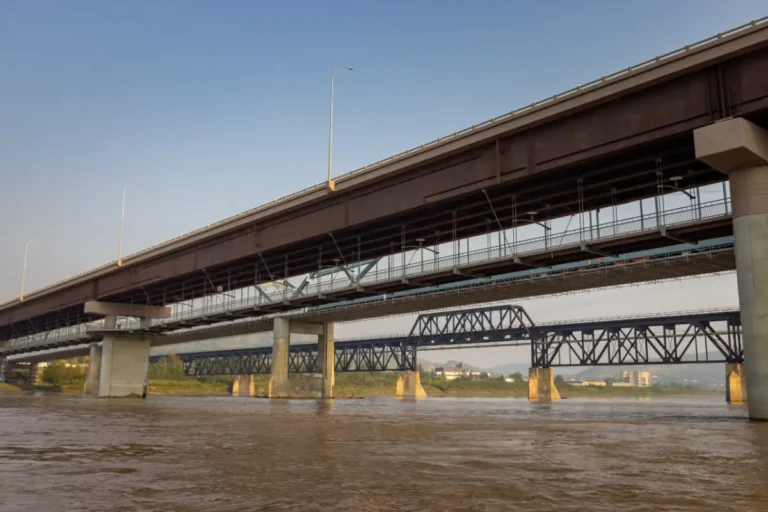The Most Historic Sites on the Peace River
Discovering the rich history along the Peace River is a journey like no other, especially when experienced from the water. As you paddle your kayak or canoe through its gentle currents, you’ll find yourself transported back in time, with numerous historical sites awaiting your exploration.
From Indigenous settlements and fur trading posts to landmarks of early pioneer life, each stop along the river offers a glimpse into the vibrant tapestry of the region’s past. The most significant historical sites along the Peace River invite you to immerse yourself in the stories and heritage that have shaped this remarkable waterway.
Whether you’re a history enthusiast or simply seeking a deeper connection to the land, these sites provide the perfect blend of adventure and education, making your river journey truly unforgettable.
Montagneuse Islands
This location holds historical significance as Alexander Mackenzie and his voyageurs camped on one of these islands as they made their way through the Northwest Passage. During their stay they were met by several Sekani Indians from whom Mackenzie had hoped to gain information about a portage ahead in his journey.
Carter Camp
Carter Camp was a Peace River family homestead in the early 1900’s. Art and Anna Carter owned a mill and homestead here, and the mill was widely known for its products. This spot was also a site for gold panning that people in the area often visited. The couple also started a cattle ranch and would run cargo up and down the river.
There is road access to Carter Camp, and it is easily seen from the river, offering an ideal spot for overnight camping. Docking your boat is easy and there is a large area with lots of river rocks and gravel to explore before making your way up to the campsites. Equipped with bathrooms, picnic tables, fire pits, firewood, a picnic area, and a playground, there are many natural areas to hike and explore while you stay or visit here.
Pratt’s Landing
Originally named after two brothers, Raymond and Frank Pratt, who arrived in the 1930’s and started farming at the top of the valley. They had a trail down the bank in the winter, where they would cross the river and bring good quality logs over from the other side.
Now, Pratt’s Landing offers a campground that has all the traditional amenities such as, RV and tent spots, picnic tables, firepits, picnic areas, a playground, hiking trails, and a boat launch that is suitable for both power boats and canoes. From the river you will notice a large, gravelled shoreline, which is the ideal location for a pitstop.
Maples Recreation Area
As the original site of St. Saviours Anglican mission from 1879 by Reverend T. Bunn, it once consisted of a large mission house combined with a hall, with about one hectare of fenced in garden. The missionaries used their horticulture expertise to establish Dunvegan’s successful reputation for having market gardens in the Peace Country.
Presently, this day use area has road access, is great for groups, and is equipped with firepits, tables and benches, a water pump, access to the river, toilets, a playground and open play area, plus lots of hiking trails nearby.
Dunvegan Historical Site and Bridge
This area holds some of the richest history in the Peace River valley. In 1793, after two days of paddling up the Peace River from Fort Fork, Alexander Mackenzie and his voyageurs at Dunvegan and met with the Chief of the Beaver Indians who was camped at the Dunvegan Flats while on a hunting trip. In 1866 the first Roman Catholic mission was established by Father Christopher Tissier here.
In 1960, the iconic Dunvegan Bridge was completed to replace the old ferry service and became the largest suspension bridge in Alberta at 1800 feet long.
The Dunvegan Provincial Park can also be found here, which has almost 70 power RV stalls, tap water, a sani-dump station, a playground, toilets, and walking paths. Just past the campground is Dunvegan Market Gardens, where you will find a greenhouse, a mini golf course, and a restaurant in operation during the summer months.
Griffin Creek
Griffin Creek was named after Thomas Griffin, a settler who arrived in the Peace River area in 1904. He grew wheat and barley and was known for promoting the area as prime agriculture land. The Griffin Creek valley has a gravel bar at its mouth and it’s not uncommon to see many boats docked here for a quick pitstop.
Shaftesbury Settlement
Previously called the Shaftesbury Flats, this section of the river was the site of many old trading posts and Indian camps. Established in 1879 as an Indian mission and farm by the Anglican missionaries, these fertile flats were named after Anthony Ashley Cooper, 7th Earl of Shaftesbury who in the 1800’s was a great sponsor of overseas missions. The first farming attempts in the Peace River valley were also made here.
Marked as “Early Gardens” on maps, this name comes from the market gardening operation of a settler named J. B Early, who moved here from Washington in 1916. He divided his land between two farming operations – one for his registered herd of Jersey cows and Belgian horses, and one for irrigated gardens to grow vegetables and flowers. In the 1920’s the steamboat, the D.A Thomas sold tickets for sightseeing excursions to see the gardens.
The Shaftesbury Settlement now has modern houses along the left shore that can be seen from the river. There is a gravel bar at the end of the last island, and there is a paved road, Secondary Highway #684, on the left shore that runs into the Town of Peace River.
Shaftesbury Ferry
Built in 1951, this is one of six ferries still in operation in Alberta. It was built by Everett Blakley to move farm equipment back and forth across the river as he had land on either side. In 1978, the Government took over the operation and called it the Berwyn Ferry, but people from Grimshaw would call it the Grimshaw Ferry. It was later renamed by the Government as the Shaftesbury Ferry after the settlement.
Mackenzie Lookout
Mackenzie Lookout is on the right side of the river and is a high grassy knob on the hills. It’s an obvious landmark to see and has a ton of history.
This is where men from Fort Fork used to watch for Mackenzie’s return during the summer of 1793. Despite their watchfulness, Mackenzie’s return took them by surprise on August 24th, 1793.
Mackenzie Cairn & Fort Fork
On the left side of the river is the Mackenzie Cairn, which has direct highway access from Secondary Highway #684. The Mackenzie Cairn was erected at the site directly across the river from the original site of Fort Fork. Although you can no longer see Fort Fork, it still holds a lot of history.
Built in 1792 as winter quarters for Alexander Mackenzie, it was later abandoned in 1805 in favour of a new fort at Dunvegan. It originally had four buildings: two warehouses, a house for Mackenzie, and another for his crew.
The original site was once marked by a flag which was erected by the Voyageurs of the Sir Alexander Mackenzie Sea-to-Sea Bicentennial Expedition and read, “Enterprising the Northwest Company”. A stone fireplace found on the site was in danger of falling into the river, so it was taken and rebuilt in 1976 at the Peace River Museum.
Smoky River
This confluence was once one of the most important sites during the fur trade and acted as a major intersection for fur traders. There were many fur trading forts in this area between the years 1792-1821, with some only lasting a year before being moved to better locations.
Pat’s Creek
Named after Pat Wesley, a Métis man who lived in a cabin along the creek. He unfortunately contracted smallpox and was cared for by the Anglican Reverend’s wife. He showed his appreciation for the care by giving five acres of prime real estate to the Anglican Church, which he was later buried nearby.
Pat’s Creek used to flow right through the Town of Peace River. It often caused flooding and overall havoc, so in 1980 it was redirected through a culvert, which you can see if you look carefully along the right bank.
Peace River Bridges
Boating under Peace River’s well-known bridges is always exciting. First you will go under the rail bridge that was built by the Canadian Bridge Company of Walkerville, Ontario, by 250 men in 1918. It’s 529 meters long and was an essential key for the Peace region after completion.
Next is the blue highway bridge which was built in 1968 and is known for its arches along each side. Previously, people had to share the rail bridge to cross the river, which often caused some havoc when they had to give train locomotives the right of way.
Whitemud River and Peace River Confluence
This was the location of the Northwest Company’s earliest fur trading post this far up the Peace, namely Fort McLeod. Established in 1791, Alexander Mackenzie mentioned it in his journals in 1792. This post operated for a few years before it eventually shut down.
Horseshoe Bend
In 1803, Alexander Roderick McLeod established a fort called Horseshoe House on the point of this river loop. He was a Northwest Company employee, and this post was meant to be used as a trading spot with the Beaver Indians. David Thompson spent 6 weeks here in the spring of 1804 after walking from Fort Fork while waiting for the ice to clear from the river.
Confluence of the Peace River and the Notikewin River
There was once a Hudson Bay Company post located here. It’s overgrown now, but near the day use area you might be able to still see remnants of a trapper’s cabin built in the 1920’s.
Exploring the Peace River offers a unique opportunity to connect with the rich history that has shaped this iconic waterway. Each historical site you visit adds a layer of depth to your journey, allowing you to appreciate the enduring legacy of the Indigenous tribes, traders, missionaries, prospectors, and settlers who once navigated these same waters.
So, pack your gear, choose your route, and embark on an unforgettable adventure that seamlessly blends natural beauty with historical discovery.


